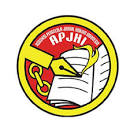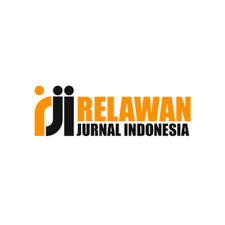Publisher:
Author Guidelines
GENERAL GUIDELINES
- Manuscript is the result of field research, case studies, or library research (Research or Review Article).
- Manuscript should be written in the Microsoft Word program.
- Manuscript should be written in English or Indonesia Language, in size 10 of Times New Roman, in single-spaced, and on 4000-15000 words in length.
- Title, Identity of the Author(s), Email, Affiliation(s), and Abstract should be written in 1 column in both Bahasa Indonesia and English along with the keywords.
- Paper size A4 (21 x 29,7 cm) wide with 2.5 cm from all margins. The template can be downloaded in a journal template.
- Citations using the Mendeley Application, with American Psychological Association (APA) style.
WRITING FORMAT
- First part: title, full name, email, affiliation, abstract, and keywords (Indonesian and English)
- Main part: introduction, methods, findings, and discussion
- Last part: Conclusion, acknowledgment (if any) and references.
TITLE AND AUTHOR(S) IDENTITY
- Title is capitalized each word, bolded in 12 size of Times New Roman, single-spaced
- The author name is written under the title without any title, may not be abbreviated, beginning with a capital letter, without beginning with the word. The writing order starts from the first author followed by the second, third, and so on.
- Email addresses of all authors are written under the author name in 10 size of Times New Roman along with the affiliation
Abstract
Abstract should reflect the overall substance of the article content. The abstract must be clear, descriptive, and provide a brief description of the problem under study, including the reasons for the study, or the importance of the research topic, research methods, and summary of the results. The abstract ends with a response regarding the significance of the findings or a brief conclusion. The abstract should be written in 2 languages (English and Indonesian), in 1 paragraph, single-spaced, containing 150-250 words.
Keywords: 35 Keywords
Keywords contain basic ideas or substance of articles that represent the area being investigated which can make it easier for readers to find articles. Keywords are written under abstract.
INTRODUCTION
Introduction contains an adequate background to show the gap of the study, objectives, and benefits, theoretical review, previous studies (state of the art) as a basis for "gap analysis" statements of the scientific novelty of articles, and hypotheses (if any). A literature review is not permitted to be written in a separate subheading but is integrated with an explanation of the background of the study to show the state of the art or the novelty of scientific findings. This section is written at a maximum of 20% of the manuscript.
METHOD
This section describes in detail the identifying variables, research subjects, instruments, and methods, including the statistical analysis techniques used (in maximum 10% of the total manuscript pages). This section should inform the reader about the types and methods used by the authors in this study. Accurate and appropriate information should be ensured for further research. Quoting definitions directly from the books should be avoided in this section.
RESULT
In the Findings section, descriptive statistics, assumption tests, and hypothesis tests are presented along with the analysis in a sequential or integrated manner (no more than 15% of the entire manuscript). Thus, this section must contain data analysis results. If possible, tables/graphs/figures/ that contain interpretations of data analysis should be attached to make the data analysis can be easily understood. Tables/graphs/figures may not contain raw data that has not been analyzed.
DISCUSSION
This section should critically explore the research findings, how the findings are related to the previous studies, and the relevance of literature/sources (should be at least 45% of the entire manuscript). This section allows you to present a substantial interpretation of the results of the analysis and comparison with previous studies based on a review of relevant, the most recent, and the main literature of the past 5 years.
CONCLUSION
Conclusion must answer the research objectives which is a summary of research findings. The conclusion should be presented in a short, clear, and concise manner based on research findings and discussion and written in paragraph form (not numerical), consisting of the synthesis of findings from data analysis and discussion and highlighting findings new contribution to the development of psychology as a science.
ACKNOWLEDGMENT (IF ANY)
This section contains acknowledgment or thanks to sponsors, grants, resource persons, or parties who have an important role in conducting the study.
REFERENCES
References are sorted according to the alphabet. All that is referred to in the article must be written in this section and vice versa. Use Reference Applications Mendeley (recommended), etc. for citation and references following the American Psychological Association (APA) format. 70% of total work cited should be articles journal either national and/or international journal articles in the last five years.









